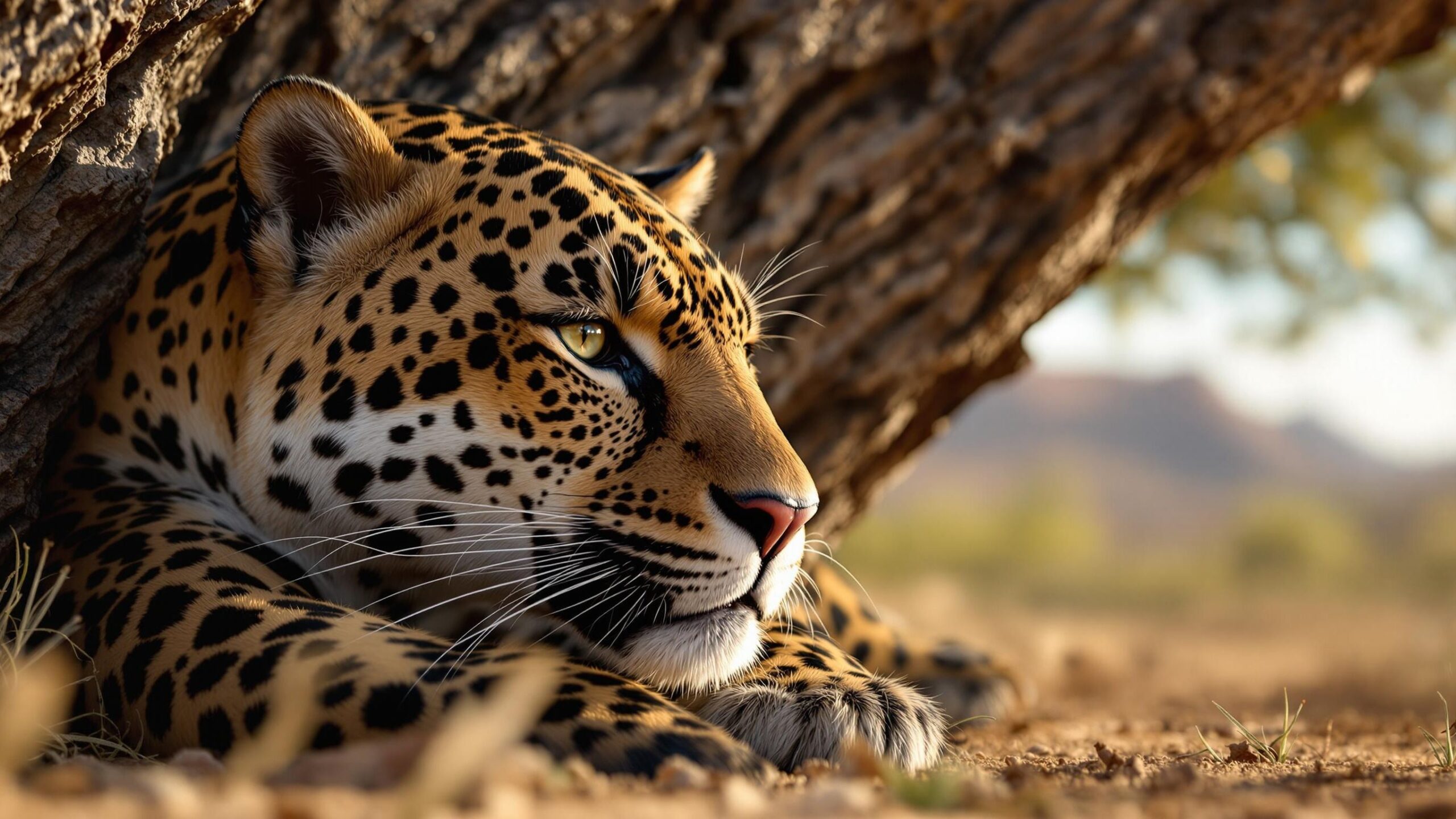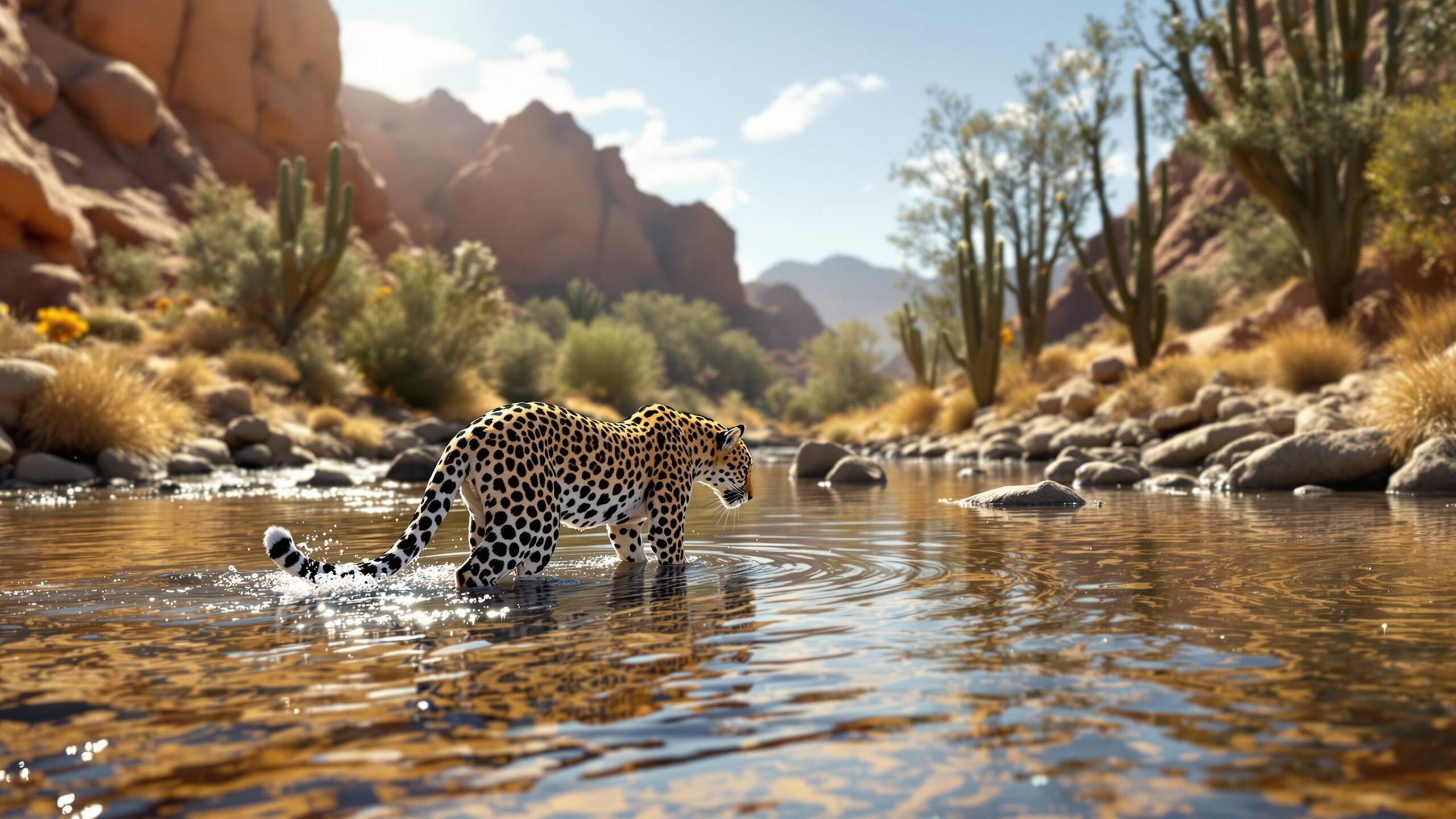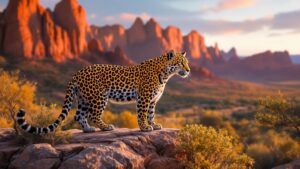American Jaguar: The Phantom of the Americas
Deep within the sun-dappled forests and whispering canyons of the Americas roams a beast as elusive as it is awe-inspiring. With golden fur cloaked in black rosettes and muscles forged by centuries of evolution, the American jaguar (Panthera onca) holds the title of the largest feline in the Western Hemisphere. Revered by ancient civilizations, feared by its prey, and admired by biologists and wildlife lovers alike, this solitary predator is more than just a powerful animal—it’s a living symbol of the untamed wilderness of the Americas.
Though commonly associated with the Amazon rainforest and Central America, the American jaguar once roamed vast swaths of the United States, from California to Louisiana. Its presence in North America, though now minimal, remains a topic of fascination and hope. The story of the American jaguar is not just one of strength and survival, but also one of disappearance, rediscovery, and perhaps, one day, return.
A Species Born of Power and Elegance
The American jaguar, scientifically known as Panthera onca, is one of five big cat species in the Panthera genus, alongside lions, tigers, leopards, and snow leopards. Among them, the jaguar stands out for its robust frame, extraordinary bite force, and unique adaptations to its diverse range of habitats.
This big cat is built like a tank. With stocky limbs, a broad head, and a deep chest, the jaguar is perfectly designed for ambush hunting and raw power. Adult males typically weigh between 120 to 210 pounds, with some exceptional individuals exceeding 250 pounds. Females are smaller but equally formidable. Despite their compact build, jaguars can grow over six feet in body length, not including their thick, expressive tails.
The jaguar’s coat is a work of art—golden to tawny yellow with black spots and rosettes that serve as camouflage in dense vegetation. Within each rosette may lie a small central dot, a distinguishing trait that sets them apart from leopards. On rare occasions, a jaguar is born with a genetic variation that causes melanism, giving it a nearly all-black appearance. These so-called “black panthers” are still jaguars, and under the right light, their rosettes remain visible.
The American Jaguar’s Historic Range
Though today jaguars are primarily associated with Latin America, especially the Amazon Basin, they once roamed much farther north. Fossil evidence and historical records indicate that jaguars lived across much of the southern and southwestern United States, including Arizona, New Mexico, Texas, California, and even into Louisiana and Florida.
Their preferred habitats are varied and expansive. Jaguars thrive in tropical rainforests, dry forests, scrublands, and grasslands. They are often found near rivers, swamps, or wetlands—a nod to their surprising affinity for water. These big cats are excellent swimmers, often crossing rivers and stalking aquatic prey with ease. Their love of water sets them apart from most other felines.
While jaguars have disappeared from much of their historical U.S. range, they continue to inhabit remote regions of Central America and northern South America. However, sightings in southern Arizona and New Mexico in recent decades have rekindled discussions about the jaguar’s presence and potential recovery in the American Southwest.
Behavior and Hunting Strategy
The American jaguar is a solitary creature, rarely seen in pairs except during mating season or a mother with her cubs. It is primarily crepuscular, active during dawn and dusk, though it may hunt during the day or night depending on prey availability and environmental conditions.
Unlike cheetahs that rely on speed or wolves that hunt in packs, jaguars rely on stealth, strength, and surprise. Their hunting style is ambush-based—they stalk their prey quietly, getting as close as possible before delivering a fatal bite. What truly sets jaguars apart, however, is their killing technique. Instead of going for the neck, jaguars often pierce the skull or braincase of their prey with a single powerful bite, thanks to the most powerful bite force relative to body size of any big cat.
Their diet is incredibly diverse. Jaguars consume over 85 species of animals in the wild, including deer, peccaries, capybaras, tapirs, monkeys, reptiles, birds, and even caimans. In some regions, they are known to eat fish and turtles. Their strength and adaptability allow them to dominate a wide variety of ecosystems.

The Role of Jaguars in Ecosystems
Jaguars are apex predators, meaning they sit at the top of the food chain. Their presence plays a vital role in maintaining ecological balance. By controlling populations of herbivores like deer and peccaries, they prevent overgrazing and support plant biodiversity.
In the American ecosystems where jaguars once roamed freely, their absence has had cascading effects. Ecologists argue that restoring jaguars to parts of their former range could help revive struggling ecosystems and promote biodiversity through trophic rewilding—a concept where apex predators are reintroduced to restore balance to an environment. Beyond biology, the jaguar has immense cultural and symbolic significance. To many Indigenous cultures, particularly those in Mesoamerica, the jaguar was a godlike figure—a spirit of power, war, and fertility. The Maya, Aztec, and Olmec civilizations depicted jaguars in their art, mythology, and rituals, a tradition that continues to shape cultural identities to this day.
Mating, Cubs, and the Lifecycle
The reproductive cycle of the American jaguar is typical of large felines. Jaguars do not have a defined mating season, though births tend to coincide with times of plentiful prey. After mating, the male plays no role in parenting. The female gives birth after a gestation period of around 90 to 105 days, usually to one to four cubs.
Cubs are born blind and helpless, relying entirely on their mother for warmth, protection, and nourishment. They begin to open their eyes after about two weeks and start to explore the world around them by two months of age. The mother is extremely protective during this time, keeping the cubs hidden in a secluded den, often in caves, hollow logs, or dense underbrush. By six months, the cubs begin learning to hunt by watching and mimicking their mother. They remain with her for up to two years, gradually gaining independence and eventually setting off to establish their own territories. The survival rate for cubs in the wild is modest, with threats from predators, starvation, and human activity reducing their chances. However, those that do survive grow into formidable and self-sufficient hunters.
The Jaguar in the United States
The American jaguar is not just a relic of the past in the United States. Over the last few decades, camera traps and confirmed sightings have documented the presence of individual male jaguars in Arizona and New Mexico. Most of these jaguars are thought to have dispersed northward from populations in Sonora, Mexico, where they still exist in the Sierra Madre Occidental.
One of the most well-known individuals was “El Jefe,” a male jaguar who lived in Arizona’s Santa Rita Mountains from 2011 to 2015. His presence captivated wildlife enthusiasts and raised national awareness about jaguar conservation. El Jefe disappeared in 2015, but others have since appeared, keeping hope alive.
Currently, there is no established breeding population of jaguars in the United States. The individuals sighted are likely transitory males. Still, their presence has prompted ongoing debates over reintroduction efforts and habitat protection, particularly in southern Arizona.
Challenges and Threats
Despite their power and adaptability, jaguars face numerous threats across their range. Habitat loss remains the greatest danger. Deforestation for agriculture, mining, logging, and urban development continues to shrink and fragment the forests and grasslands jaguars call home. Roads and infrastructure not only destroy habitat but also create deadly barriers that isolate populations and increase the risk of vehicle collisions.
Human-wildlife conflict is another persistent issue. As jaguars come into closer contact with human communities, especially ranches, they sometimes prey on livestock. In retaliation, farmers and ranchers may kill jaguars to protect their animals. In some cases, jaguars are also hunted illegally for their pelts, teeth, and other body parts, which are sold on black markets. In the U.S., the main threat is lack of protected habitat and genetic isolation. With no females confirmed north of the border, the odds of a natural breeding population reestablishing itself remain slim unless deliberate conservation steps are taken.
Conservation: A Quiet Comeback?
Despite the challenges, there is reason for cautious optimism. Jaguar populations in some areas of Latin America are stabilizing or even increasing thanks to conservation programs. Organizations like Panthera, the Wildlife Conservation Society, and local governments are working to protect critical habitat corridors, support coexistence with local communities, and combat poaching. In Mexico and Central America, conservationists have established biological corridors to allow jaguars to roam safely between protected areas. These corridors are essential for maintaining genetic diversity and healthy population dynamics.
In the U.S., efforts have focused on habitat preservation and policy advocacy. The jaguar is listed as endangered under the U.S. Endangered Species Act, which provides legal protection. Conservationists are also pushing for the expansion of protected areas in Arizona and New Mexico, where sightings have occurred. Some bold proposals suggest the eventual reintroduction of jaguars into suitable American wilderness areas. While controversial, this idea has gained traction among some wildlife ecologists who believe the time has come to repair past ecological losses.

Cultural Legacy and Symbolism
Few animals have inspired as much awe and reverence across time and geography as the jaguar. In pre-Columbian Mesoamerica, the jaguar was a powerful deity. The Maya believed jaguars could travel between the physical world and the spirit realm. The Aztecs associated them with warriors and the underworld. In Peru, the Inca wove jaguar imagery into their spiritual beliefs and art.
Today, the jaguar still inspires modern culture, conservation art, eco-tourism, and indigenous pride. It is a symbol of raw power, resilience, and the natural beauty of the Americas. In some places, jaguars are seen as guardians of the forest—a role they truly play in maintaining the health of ecosystems.
Looking Ahead
The American jaguar, long thought to be banished from the United States, is knocking on the door of its ancestral homeland. Its faint return to Arizona’s wild mountains is a whisper of what once was and what could be again. Whether or not these whispers grow into roars will depend on the choices we make in the coming years.
The jaguar does not demand much. It requires space, prey, and a measure of tolerance from the humans who share its world. What it gives in return is priceless: a reminder of nature’s grandeur, mystery, and unyielding will to survive.
By protecting the American jaguar, we protect more than just a species—we protect a living thread of wild heritage that binds the continents together in one powerful, golden-spotted form. And with every paw print left behind in the dust of the desert or the mud of a mountain stream, the jaguar leaves a challenge: to preserve, to coexist, and to remember that the wild still has a place in our world.

American Jaguar
American Jaguar: The Phantom of the Americas Deep within the sun-dappled forests and whispering canyons of the Americas roams a beast as elusive as it is awe-inspiring. With golden fur cloaked in black rosettes and muscles forged by centuries of evolution, the American jaguar (Panthera onca) holds the title of the largest feline in the Western Hemisphere. Revered by ancient civilizations, feared by its prey, and admired by biologists and

